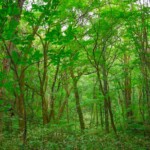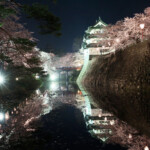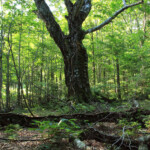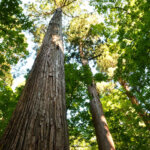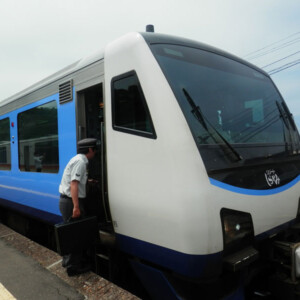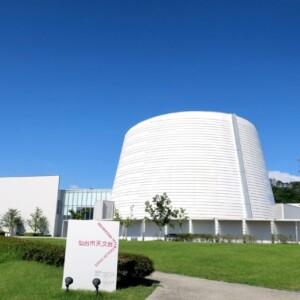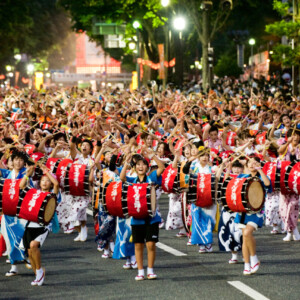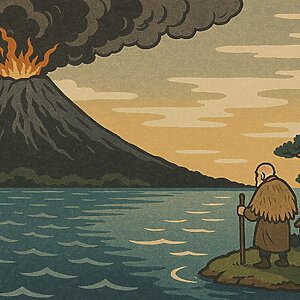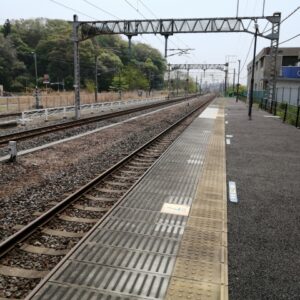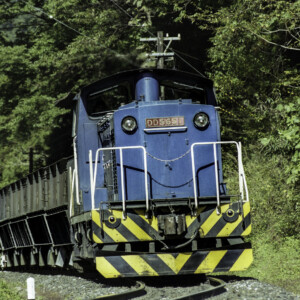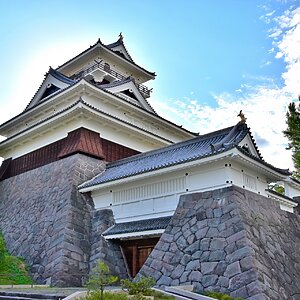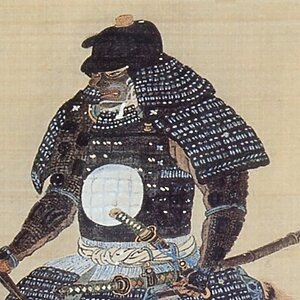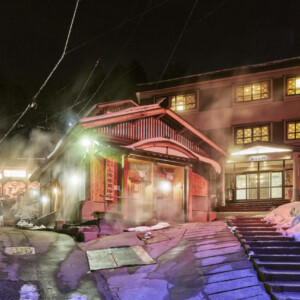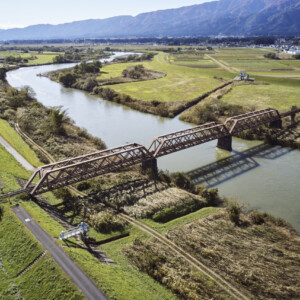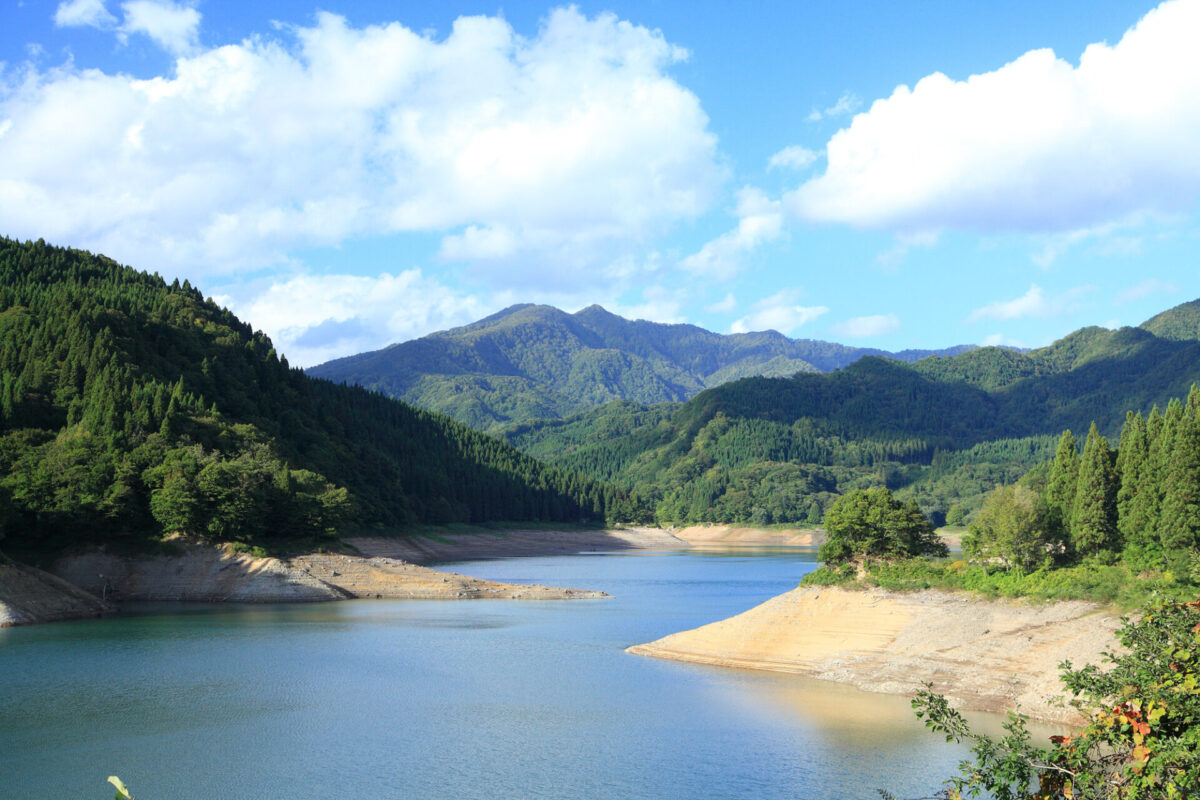
秋田県唯一の世界自然遺産「白神山地」の町・藤里町。最大の見所は手つかずの大自然
目次
藤里町(ふじさとまち)は、秋田県北部、北側を青森県に接し、面積は約2万8,200㏊(ヘクタール・以降㏊表記/282平方キロメートル)で、約90%が森に覆われている自然豊かな町です。そのうちの約4,344㏊が世界自然遺産「白神(しらかみ)山地」で、町全体が広い意味での白神山地エリアに含まれています。
「白神山地」が生活の一部。「白神山地」を愛し、守っている藤里の人々
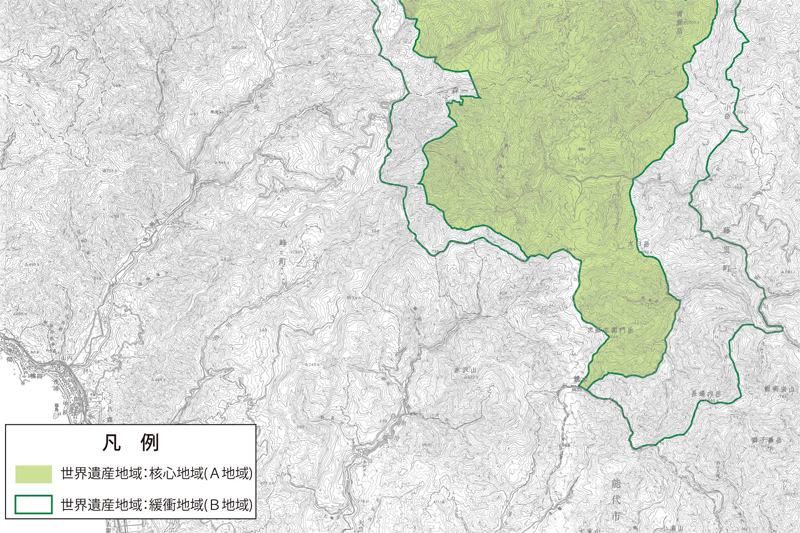
藤里町の標高は一番低い矢坂地区で110mあまり、最高地点は藤里駒ヶ岳(ふじさとこまがだけ)で標高1,158mです。標高1,000m以上の高山が連なる青森県境地域は藤里駒ヶ岳を除いてほとんどが世界遺産「白神山地」に登録されていて、その核心地域(コアゾーン)2,466㏊(秋田県側)は、入山が禁止され厳重に保護・管理されています。(青森県側の核心地域は入林許可申請し許可された人のみ入山可)。核心地域の周辺には世界自然遺産に含まれる1,878㏊の緩衝地域(バッファゾーン)があり、入山可能で核心地域を守る役割をしています。
藤里町は、旧藤琴村(ふじことむら)と旧粕毛村(かすげむら)が合併してできた町で、人口は約2,400人(2025年8月秋田県統計)となっています。
江戸時代には久保田藩の繁栄に寄与し、昭和30年代まで採掘された「太良鉱山」
藤里エリアは、秋田県でも最も森が深く、大半が山岳地帯のため、歴史に登場することはほとんどないのですが、唯一「太良鉱山(だいらこうざん)」は、良質な鉛や亜鉛を産出する鉱山として、江戸時代半ば以降脚光を浴びる存在でした。
「太良鉱山」の開山は、一説によると平安時代や鎌倉時代とも伝承されていますが、戦国時代から江戸初期頃との記述も残っていてはっきりとはしていません。江戸時代初期には銀山として知られていたようです。
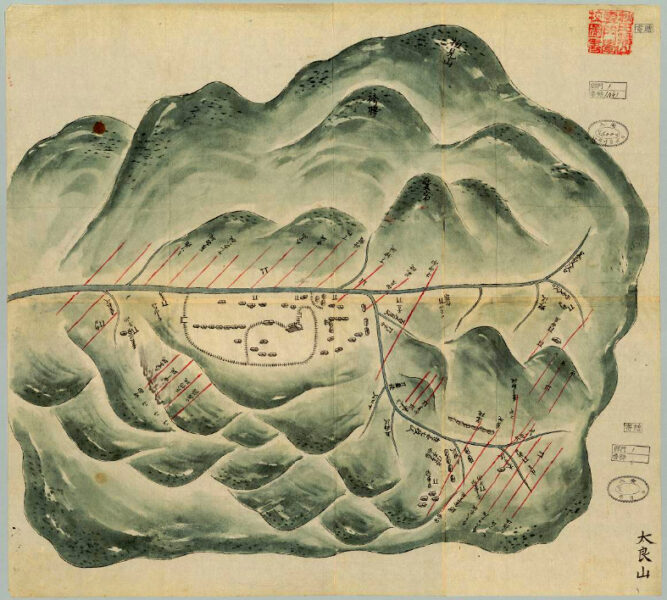
「太良鉱山」は、米代川の中流部の港町荷上場(にあげば/能代市二ツ井町荷上場)付近に合流する藤琴川(ふじことがわ)の上流部に位置していて、産出物は藤琴川で荷揚場に運ばれ、米代川で能代の湊に送られていました。1775年に当時日本一の産出量を誇った阿仁銅山(あにどうざん)の銅を製錬するために、荷上場に加護山製錬所(かごやませいれんじょ)が創設され、銅製錬の触媒として「太良鉱山」の鉛が重要な役割を果たしたのです。
1802年には紀行家の菅江真澄(すがえますみ/1754年~1829年)が訪れ、山中の至る所に坑道が掘られている風景や、人の多さに驚いたと書き記しています(『菅江真澄遊覧記』のうち[しげき山本]に掲載)。1817年には久保田藩の直営となり、阿仁鉱山や院内(いんない)銀山(湯沢市)とともに、久保田藩の大きな財源となっていました。
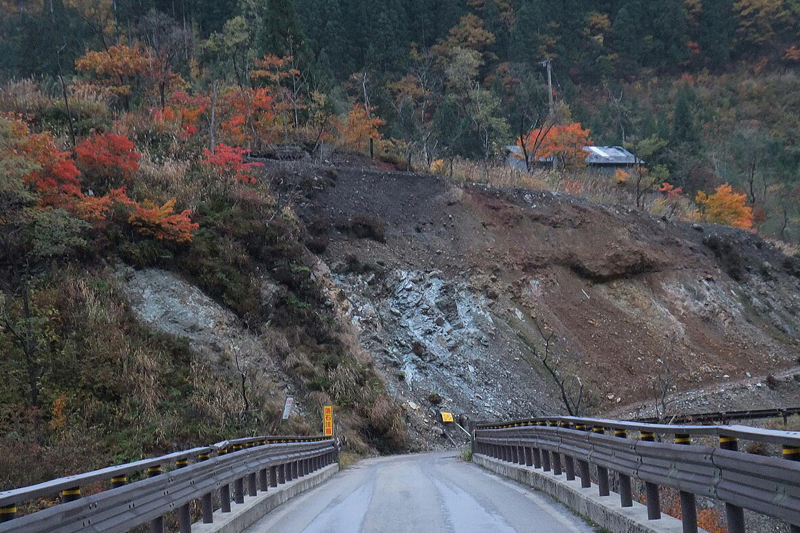
太良鉱山跡地。山の中にいくつもの坑道が造られていた ©らんで
明治時代以降は古河市兵衛(ふるかわいちべえ/1832年~1903年/鉱山家・古河鉱業[現古河機械金属]創始者)に払い下げられましたが、1958年(昭和33年)の大洪水で大きく損傷し閉山しました。
太良鉱山 Information
- 施設名称:太良鉱山跡
- 所在地:秋田県山本郡藤里町大字太良
- 問い合わせ先:藤里町商工観光課
- 電話番号:0185-79-2115
- ※クマの出没が多くなっています。鈴やホイッスル、クマ撃退スプレーなどを所持し、単独行動をしないなど十分に気をつけて行動してください。またスズメバチにも注意してください
- アクセス:
- 公共交通機関/JR奥羽本線二ツ井駅から車で約50分
- 車/秋田自動車道二ツ井白神ICから約55分
Google Map
紅葉が美しいハイキングコース、「太良峡」「太良峡風致探勝林」
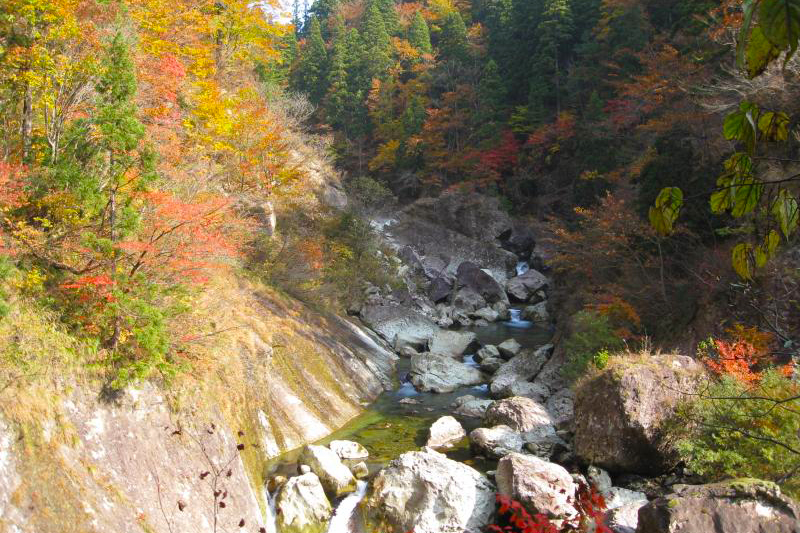
「太良峡(だいらきょう)」は、藤琴川を溯ること20kmほどのところにある渓谷で、左岸側には三蓋山(さんがいやま/標高約952m)、右岸側は藤里駒ヶ岳がそびえる森林地帯にあります。標高は約200mで、渓谷付近はブナやクリなどの落葉広葉樹と、スギの人工林が深い森を作っています。周辺は「太良峡風致探勝林」に指定されていて、特に紅葉の美しい手軽なハイキングコースとして人気があります。世界遺産登録外エリアです。
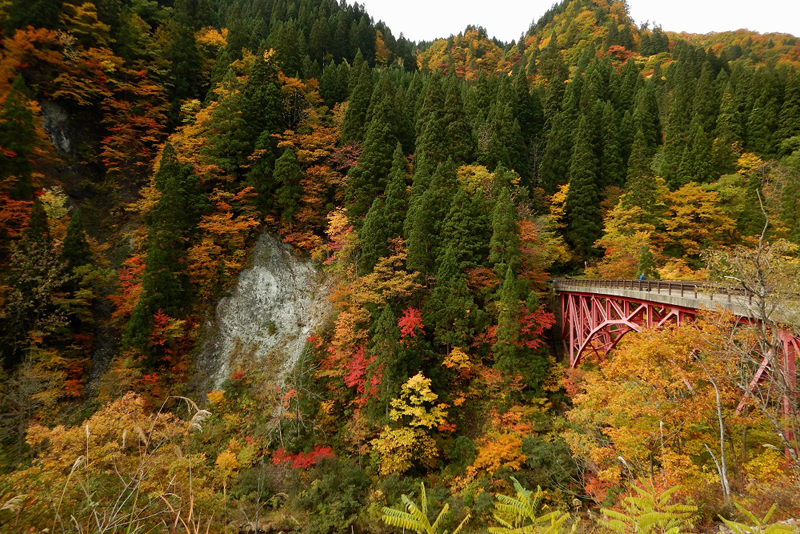
太良峡、太良峡風致探勝林 Information
- 施設名称:太良峡、太良峡風致探勝林
- 所在地:秋田県山本郡藤里町大字太良
- 問い合わせ先:藤里町商工観光課
- 電話番号:0185-79-2115
- ※冬季通行止め。開通5月頃予定
- ※クマの出没が多くなっています。鈴やホイッスル、クマ撃退スプレーなどを所持し、単独行動をしないなど十分に気をつけて行動してください。またスズメバチにも注意してください
- URL:太良峡
- アクセス:
- 公共交通機関/JR奥羽本線二ツ井駅からタクシーで約50分
- 車/秋田自動車道二ツ井白神ICから約55分
Google Map
自然遺産エリアの外側、ブナの天然林の中に散策路が設けられている「岳岱自然観察教育林」
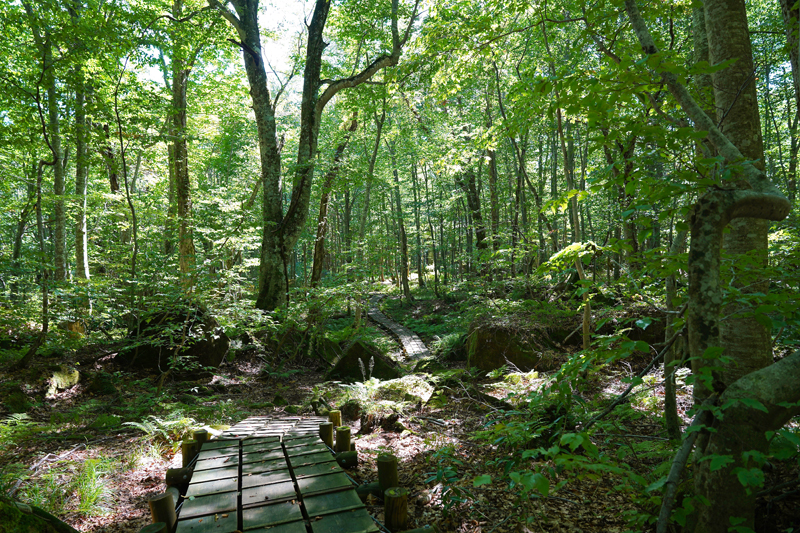
「岳岱(たけだい)自然観察教育林」は、白神山地に迷い込んだような雰囲気を味わえる、ブナをはじめとする落葉広葉樹の天然林です。広さは約18㏊で、標高約620m。うっそうとした森の中にはスニーカーでも歩けるような散策路が整備されています。林内にあるしっかりした造りの[多目的展示施設]は、トイレや休憩、荒天時などの避難所になるので、入林する前に必ずその場所を確認しておきましょう。
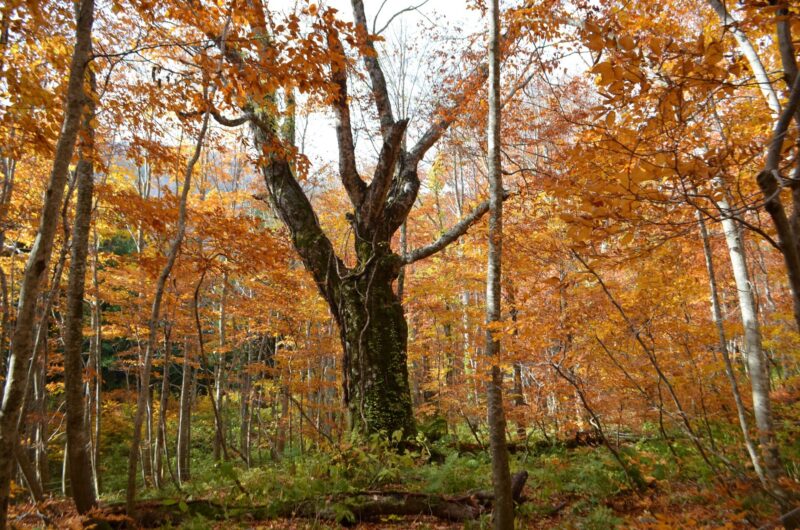
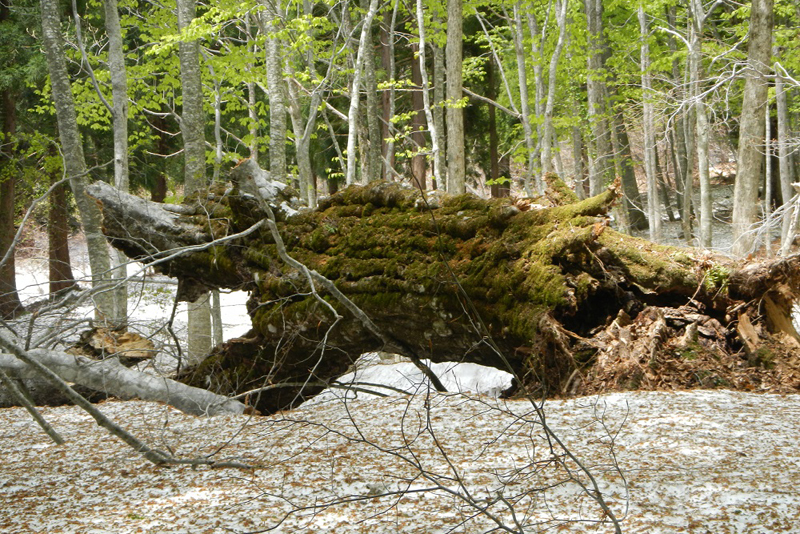
森には有名なアニメの参考としたといわれていて、樹齢400年とも考えられていた[400年ブナ]もありましたが、2022年(令和4年)3月に天寿を全うし、土に帰っていきました。
「岳岱自然観察教育林」では、樹木だけでなく珍しい小動物や花などにも出会えるかもしれません。でも、秋は実りの季節。特にブナの実が大好きというクマには十分気をつけてください。世界遺産登録外エリアです。
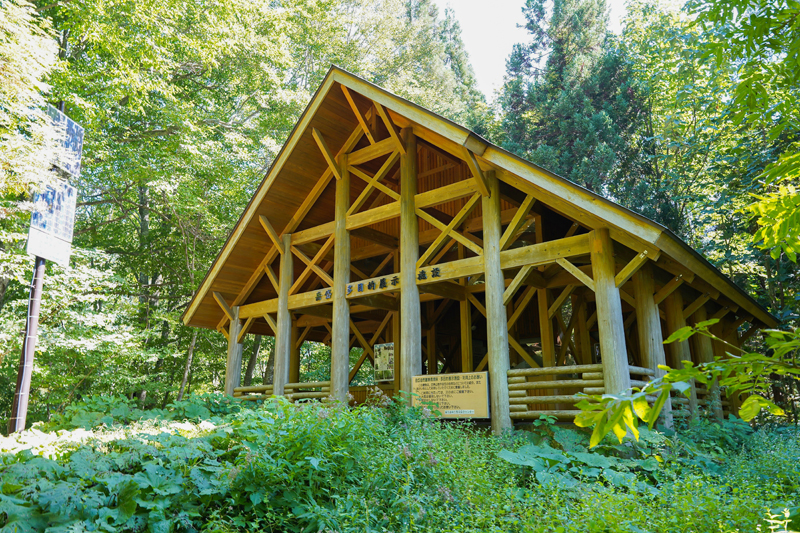
岳岱自然観察教育林 Information
- 施設名称:岳岱自然観察教育林
- 所在地:秋田県山本郡藤里町藤琴字藤琴沢国有林内
- 問い合わせ先:藤里町商工観光課
- 電話番号:0185-79-2115
- ※冬季通行止め。開通5月頃予定
- ※クマの出没が多くなっています。鈴やホイッスル、クマ撃退スプレーなどを所持し、単独行動をしないなど十分に気をつけて行動してください。またスズメバチにも注意してください
- URL:岳岱自然観察教育林
- アクセス:
- 公共交通機関/JR奥羽本線二ツ井駅からタクシーで約70分
Google Map
ミズバショウやニッコウキスゲが美しい「田苗代湿原」。晩秋の“くさもみじ”も必見
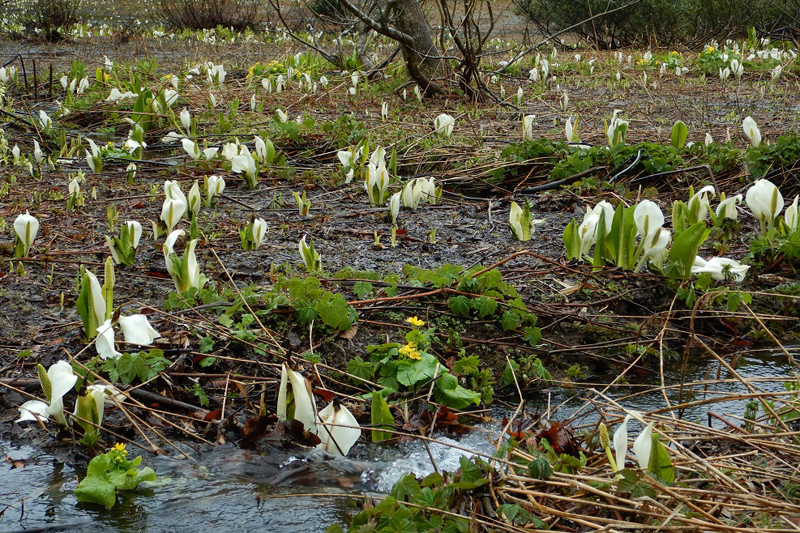
「田苗代湿原(たなしろしつげん)」へは、「岳岱自然観察教育林」から車で10分ほどの藤里駒ヶ岳登山の黒石沢登山口から。車をおりて旧道コースを15分ほど行くと到着です。湿原には木道が整備され、春から夏のミズバショウやニッコウキスゲの群落を楽しむことができます。また、秋には周りのブナをはじめとする落葉広葉樹の紅葉が美しく、“くさもみじ”といわれる秋の湿原も、ちょっと寂しげですが秋を代表する風景です。
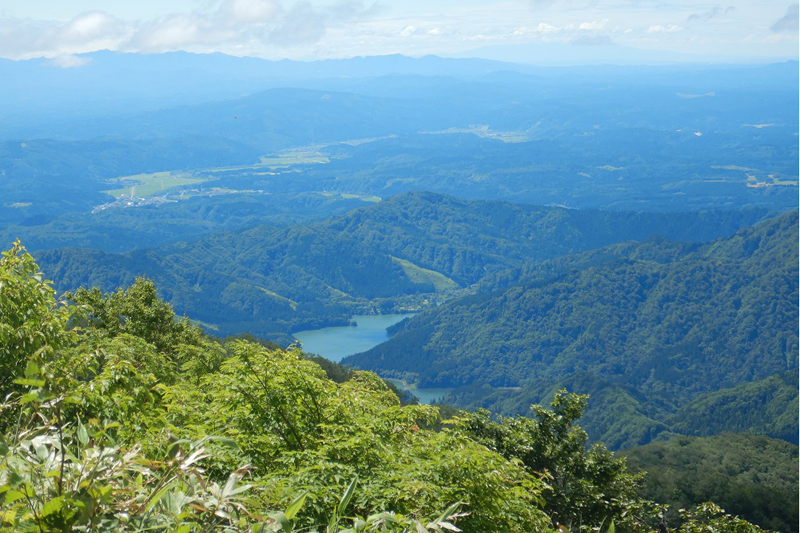
「田苗代湿原」から藤里駒ヶ岳頂上までは2時間ほどで到着しますが、こちらは、服装、靴など本格的な装備が必要です。できれば道案内を登山ガイドに依頼することをおすすめします。山頂からはブナの原生林に覆われた白神山地の中核部分や、岩木山などが望めます。世界遺産登録エリア外です。
藤里駒ヶ岳・田苗代湿原 Information
- 施設名称:藤里駒ヶ岳・田苗代湿原
- 所在地:秋田県山本郡藤里町藤琴字藤琴沢
- 問い合わせ先:藤里町商工観光課
- 電話番号:0185-79-2115
- 冬季通行止め
- ※クマの出没が多くなっています。鈴やホイッスル、クマ撃退スプレーなどを所持し、単独行動をしないなど十分に気をつけて行動してください。またスズメバチにも注意してください
- URL:藤里駒駒ヶ岳・田苗代湿原
- アクセス:
- 公共交通機関/JR奥羽本線二ツ井駅から車で約1時間20分
- 車/秋田自動車道二ツ井白神ICから約1時間30分
Google Map
キャンプやテニス、自然散策などに最適なダム湖岸にある「素波里園地」
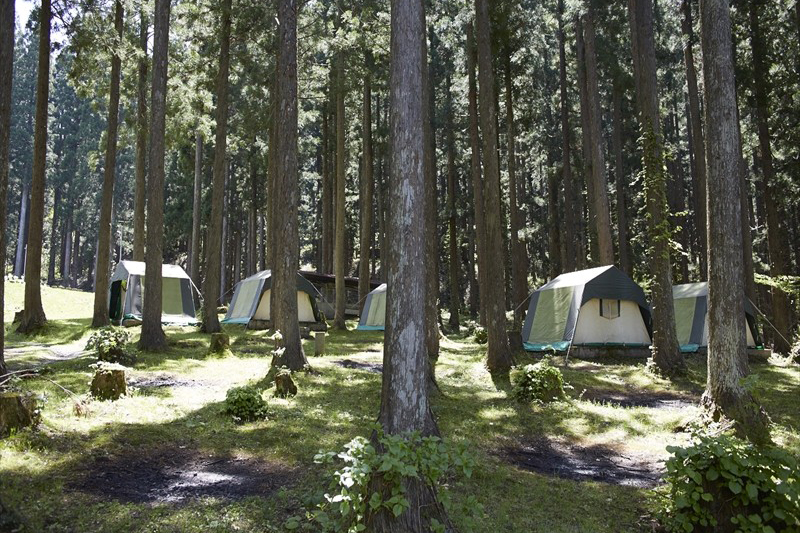
「素波里園地(すばりえんち)」は、素波里ダムの右岸にあり、国民休養地として、キャンプ場、テニスコート、菖蒲園、自然公園センターなどの施設がそろい、アウトドアライフを満喫できます。地元産の羊の肉「ホゲット」が食べられるレストハウス「サフォーク白神」もあり人気です。 周辺はブナなどの落葉広葉樹にスギが混成する森が広がり、新緑から紅葉まで四季折々の美しい景観の変化を楽しめます。
素波里園地 Information
- 施設名称:素波里園地
- 所在地:秋田県山本郡藤里町粕毛字南鹿瀬内 38
- 問い合わせ先:藤里町商工観光課
- 電話番号:0185-79-2115
- 営業期間:4月下旬~11月上旬
- 休業日:月曜(月曜祝日の場合は、祝日の明けた日)
- 携帯電話:「サフォーク白神」前のみ圏内
- Wi-Fi:無料(ふるさと自然公園センター内)
- ※営業日や設備、料金等に関してはオフィシャルホームページか電話で要確認
- ※クマの出没が多くなっています。鈴やホイッスル、クマ撃退スプレーなどを所持し、単独行動をしないなど十分に気をつけて行動してください。またスズメバチにも注意してください
- URL:素波里園地
- (注)「素波里園地」から先、小岳(こだけ)および「小岳自然観察教育林」方面は、自然災害のため2025年10月現在通行止めです。復旧に関しては未定です。詳しくは東北森林管理局(電話番号:018-836-2276)へお問い合わせください)
- アクセス:
- 公共交通機関/JR奥羽本線二ツ井駅から車で約30 分
- 車/秋田自動車道二ツ井白神ICから約40分
Google Map
白神山地の恵み、主要道路からすぐのところで見学できる名瀑
ブナをはじめとする落葉広葉樹の森「白神山地」の豊富な湧き水は、人々の生活領域の里を潤しています。滝も多く、深い森に入らなくても、美しい滝を見学できます。
「峨瓏(がろう)大滝」「銚子(ちょうし)の滝」は、藤里町の中心街から4~5kmの距離にあり、歩いても簡単に行けます。
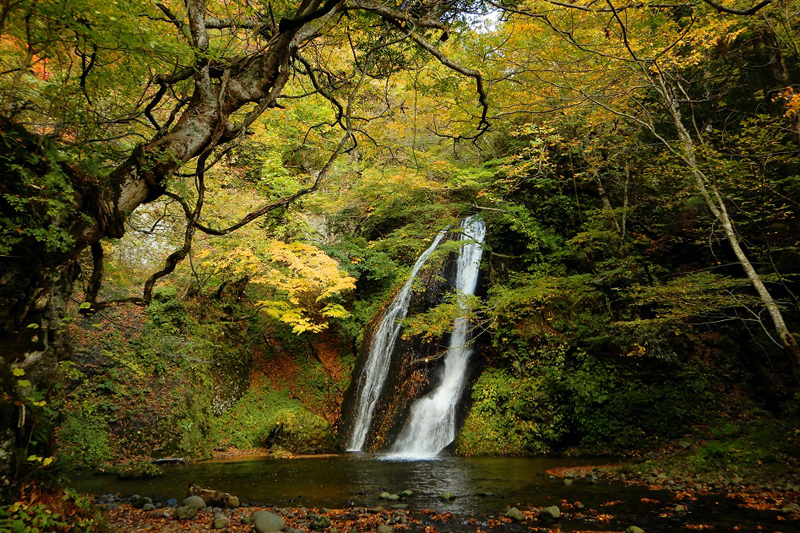
「峨瓏大滝」は、藤里町の中心街から5.5kmほどのところにある峨瓏大滝親水公園内にあり、落差は約12mです。春と紅葉時期にはライトアップされます。
峨瓏大滝 Information
- 施設名称:峨瓏大滝
- 所在地:秋田県山本郡藤里町藤琴字大落地内
- 問い合わせ先:藤里町商工観光課
- 電話番号:0185-79-2115
- ※クマの出没が多くなっています。鈴やホイッスル、クマ撃退スプレーなどを所持し、単独行動をしないなど十分に気をつけて行動してください。またスズメバチにも注意してください
- URL:峨瓏大滝
- アクセス:
- 公共交通機関/JR奥羽本線二ツ井駅から車で約25分
- 車/秋田自動車道二ツ井白神ICから約30分
Google Map
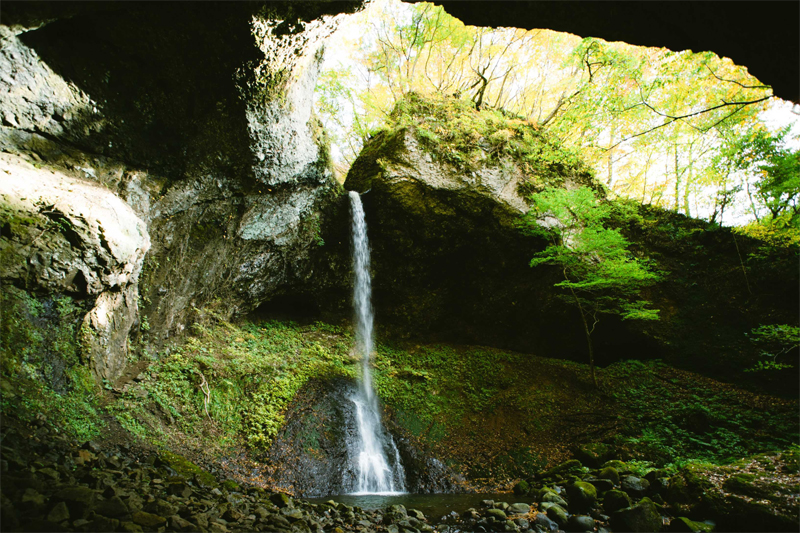
「銚子(ちょうし)の滝」は、藤里町中心部から4kmほどのところにあり、落差は約18m。江戸時代、菅江真澄が訪れた際には、滝右側の岩から温泉が湧き出ていたと記されています。その温泉は現在滝には自然湧出していませんが、温泉は健在で隣接する温泉旅館「湯の沢温泉 湯元 和みの湯」の源泉として利用されています。
銚子の滝 Information
- 施設名称:銚子の滝
- 所在地:秋田県山本郡藤里町藤琴下湯の沢地内
- 問い合わせ先:藤里町商工観光課
- 電話番号:0185-79-2115
- ※クマの出没が多くなっています。鈴やホイッスル、クマ撃退スプレーなどを所持し、単独行動をしないなど十分に気をつけて行動してください。またスズメバチにも注意してください
- URL:銚子の滝
- アクセス:
- 公共交通機関/JR奥羽本線二ツ井駅から車で約25分
- 車/秋田自動車道二ツ井白神ICから約30分
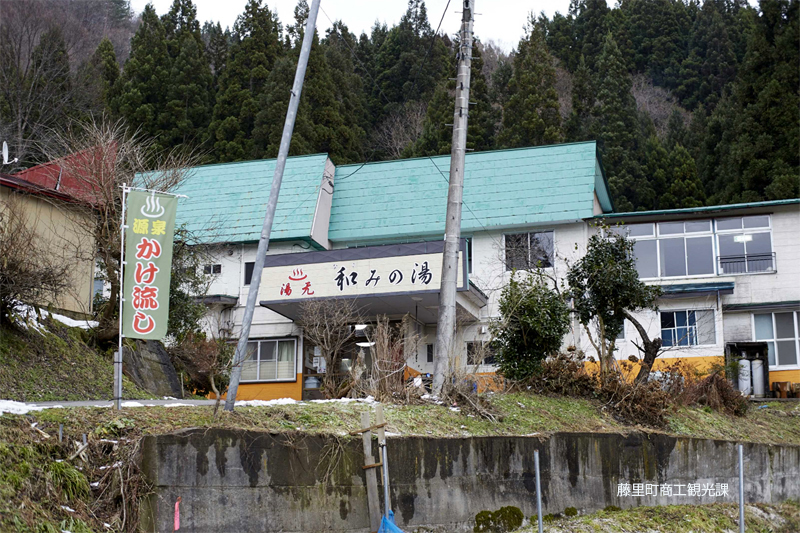
湯の沢温泉 湯元 和みの湯 Information
- 施設名称:湯の沢温泉 湯元 和みの湯
- 所在地:秋田県山本郡藤里町藤琴下湯の沢62
- 電話番号:0185-79-2710
- 温泉:塩化物泉(源泉掛け流し)
- ※営業形態、料金等は電話で確かめてください
- アクセス:
- 公共交通機関/JR奥羽本線二ツ井駅から車で約20分
- 車/秋田自動車道二ツ井白神ICから約25分
Google Map
「白神山地」の秋田県側玄関口、白神山地世界遺産センター(藤里館)
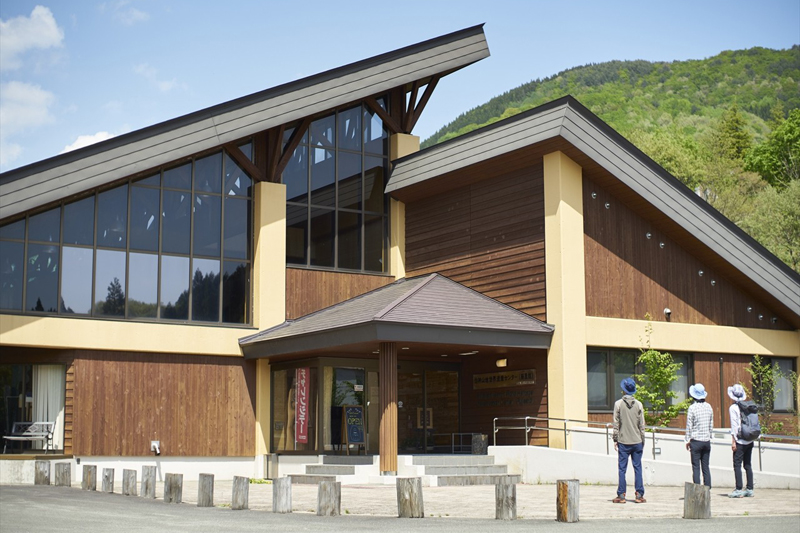
「白神山地世界遺産センター(藤里館)」は、白神山地の南麓、藤里町にある白神山地を知る上でぜひ立ち寄りたい展示施設です。
館内には、生息する動植物の資料を展示・紹介するコーナーや、図書も豊富に置かれ、DVD鑑賞スペースもあります。
白神山地に詳しい自然アドバイザーが常駐していて、初めて訪れた人でも白神山地のことを分かりやすく解説してくれます。
白神山地世界遺産センター(藤里館)Information
- 施設名称:白神山地世界遺産センター(藤里館)
- 所在地:秋田県山本郡藤里町藤琴里栗63
- 電話番号:0185-79-3005
- 開館時間:
- 3月~11月/9:00~17:00
- 12月~2月 10:00~16:00
- 休館日:
- 3月~11月/火曜日(祝日の場合は翌日)
- 12月~2月/月・火曜日(祝日の場合は火・水曜日)、年末年始
- 入館料:無料
- URL:白神山地世界遺産センター(藤里館)
- アクセス:
- 公共交通機関/JR奥羽本線二ツ井駅からタクシーで約20分または、真名子行き路線バスで約20分「湯の沢温泉」バス停下車(土日祝日・年末年始等運休)
- 車/秋田自動車道二ツ井白神ICから約30分
Google Map
※情報は2025年9月現在のものです


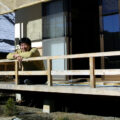
![どうして世界各地には[白神山地]より広いブナの原生林がなくなった?【青森県藤里町】 白神山地遠方岩木山](https://jp.neft.asia/wp-content/uploads/2025/09/0d3ff92f34c42ae905cbae977b5345c3-150x150.jpg)
